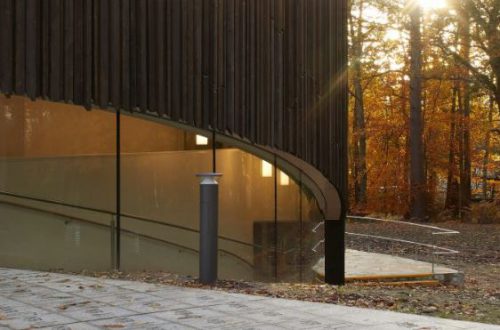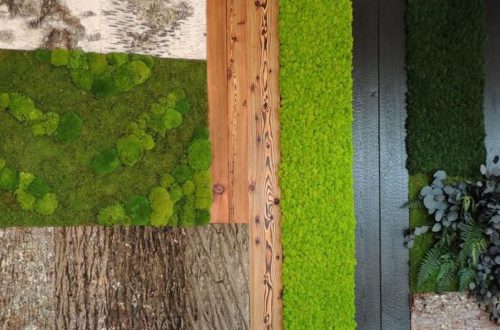Architecture
-
Green Roof and Shou Sugi Ban Update Victorian-era Home
To embrace indoor/outdoor living, this Victoria-era house in London is outfitted with a handsome new extension wrapped in Shou Sugi Ban cladding. Designed by Neil Dusheiko Architects, the Black Ridge House provides a modern contrast to the original home’s Victorian brickwork. Inspired by biophilic design principles, the new-build was constructed with several energy-saving features — such as a green roof and underfloor heating — and sustainably sourced timbers to connect the home to nature. Inspired by the roof-lines of the area’s early Warner houses, the Black Ridge House features gabled volumes clad in Kebony, a sustainable and durable alternative to tropical hardwood. The engineered wood was charred using the Shou Sugi Ban technique to create a…
-
The Birth Of A Wooden House
For anyone interested in exquisite woodcraft, this documentary movie from Northmen: The Northern Guild of Master Craftsmen uncovers the process of building a wooden house with hand tools and local materials – starting with finding timber in the local forest till finishing the living space. “To preserve the wood from the spoiling, fame posts, sills, top beams and final cladding boards are treated with fire and pine tar mixed with Tung oil. This wood preservation technique was adapted from the Japanese traditional wood preservation technique Shou Sugi Ban (焼杉板).” Master Craftsman “I built my house from trees that I felled with an axe and two man crosscut saw in my…
-
Hotel Kabuki adds Shou Sugi Ban Style
One of San Francisco’s hippest boutique hotels, Hotel Kabuki, recently unveiled the second phase of its expansive, two-year $32 million renovation. Located in the heart of the city’s Japantown, the hotel is known for its blend of boho elements and contemporary Japanese design. The hotel’s interiors showcase the shou sugi ban technique—traditionally used to fireproof old Japanese houses by burning or charring wood, producing a lived-in, warm effect. The recent renovations have added some new elements worth highlighting, including a long-anticipated lobby bar serving Japanese-influenced cocktails and bites, as well an impressive selection of Japanese whiskeys. Next time you are in San Francisco, make sure to stop by! Read more about the renovation at Forbes Magazine.
-
Biophilic Design: The Architecture of Life
Fascinating documentary from 2011 on the convergence of nature, conservation and architecture. Watch the Trailer. What is Biophilic Design? Ultimately, biophilic design is more about restoring our connection to nature than it is about adopting a new methodology for designing the built environment. Its accomplishment will therefore, require a fundamental shift in human consciousness that leads to a new ethic of responsibility for caring for the earth and our relationship to it. The heart of this challenge is a modern world that has forgotten in so many ways how much our physical, mental and even spiritual health and well-being continue to rely on the quality of our relationship to nature. The promise of…
-
Escape to a Shou Sugi Ban Tree House in the English Forest
A magical tree-house retreat has opened its doors in the village of Lee in England’s stunning North Devon region. Built largely by hand, this luxurious one-bedroom rental is dressed in a combination of reclaimed and modern materials. Set within remote woodland, the Treehouse Retreat immerses guests in a private paradise in nature without sacrificing modern comforts. Built to sleep two, the two-story Treehouse Retreat is clad in locally sourced cedar charred using Shou Sugi Ban, a Japanese technique that enhances the grain of the wood and naturally protects it from rot, pests and the elements. Timber is used throughout the interior as well to tie the tree-house to its surroundings. Reclaimed flooring from an old…



















